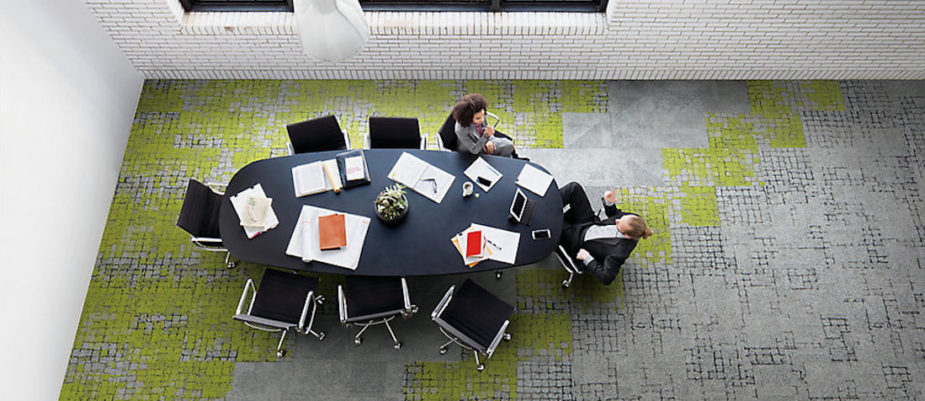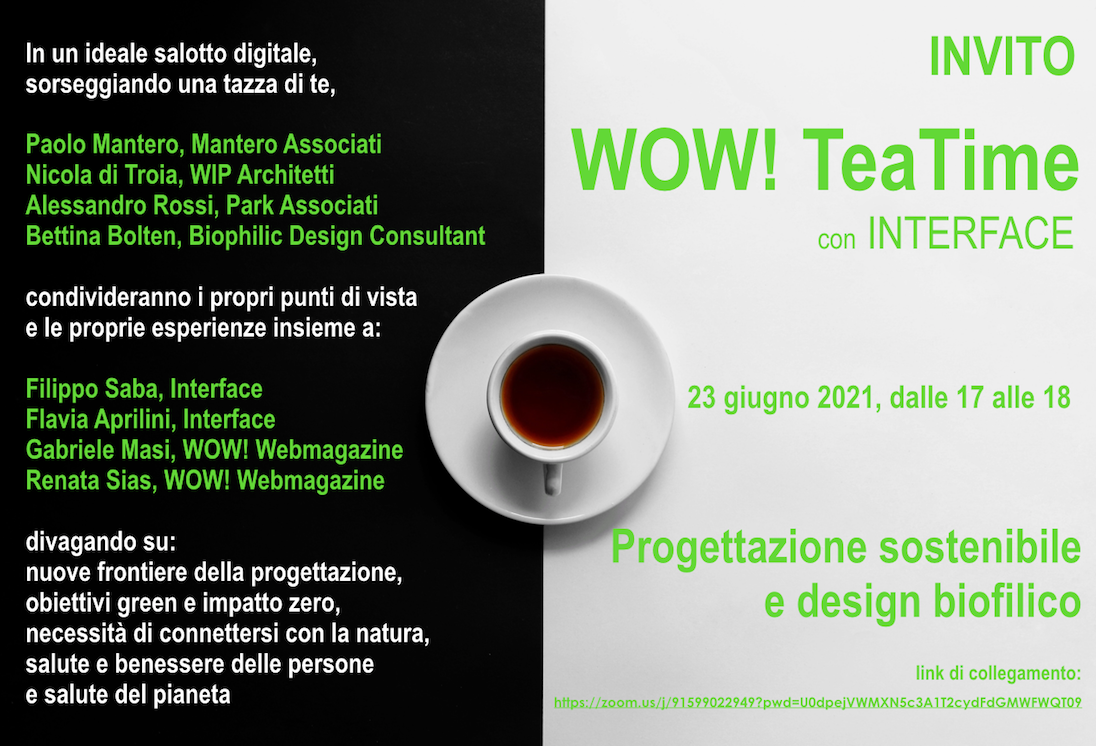
In recent times we often hear about Biophilic Design, a theme that we have dealt with several times on WOW! Webmagazine.
But are we sure we are facing what is called a new frontier of design? Isn’t it a question of Biophilic Washing, as happened with the Green Washing phenomenon, which is often passed off as Sustainability?
We will talk about these issues at the WOW! Tea Time Party which will take place on 23 June from 5 to 6 pm, a virtual and informal event, organized together with Interface, a company that has always been committed to achieving challenging objectives in terms of sustainability and among the first companies to have applied Biophilic Design own products.
Because one thing is certain: the biophilic approach to the project goes far beyond the simple insertion of plants into our living environments.
The WOW! Tea Time Party is open to the public: click here to attend the meeting (in Italian).
Password: moving from green design to restorative design.
We will talk about Green Objectives and Biophilic Design as a new frontier of design in our “virtual living room” where some professionals have been invited to share their experiences.
Paolo Mantero, Mantero Associati
Nicola di Troia, WIP Architetti
Alessandro Rossi, Park Associati
Bettina Bolten, Biophilic Design Consultant
It is no coincidence that this meeting is organized in collaboration with Interface, a pioneer company in green innovation that has been applying biophilic design for years, and, after reaching the Zero Impact goal in 2020, and now setting itself the “Carbon Negative” Mission going beyond neutrality and creating “Carbon Negative” flooring that will help restore the health of the planet.
In fact, the starting point is that Biophilia can only be a “consequence” of Sustainability.
As Filippo Saba and Flavia Aprilini will explain.
The Tea Party will end with the reflections of the anthropologist Gabriele Masi.
Why does contact with nature make us happy?
Why has it become so important to consider the need to connect with nature in architecture and design projects?
Many projects even seek a kind of symbiosis with nature.
It is scientifically proven that nature has a positive effect on the psycho-physical wellbeing of people.
Positive spaces make people happier; but is it possible to consider people’s health and wellbeing without putting the health of the planet first?

















